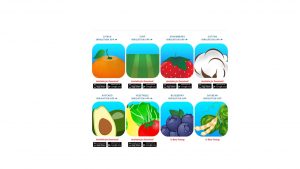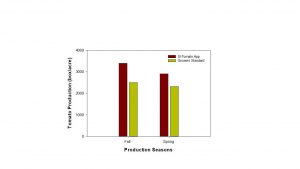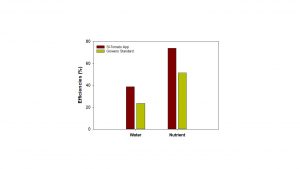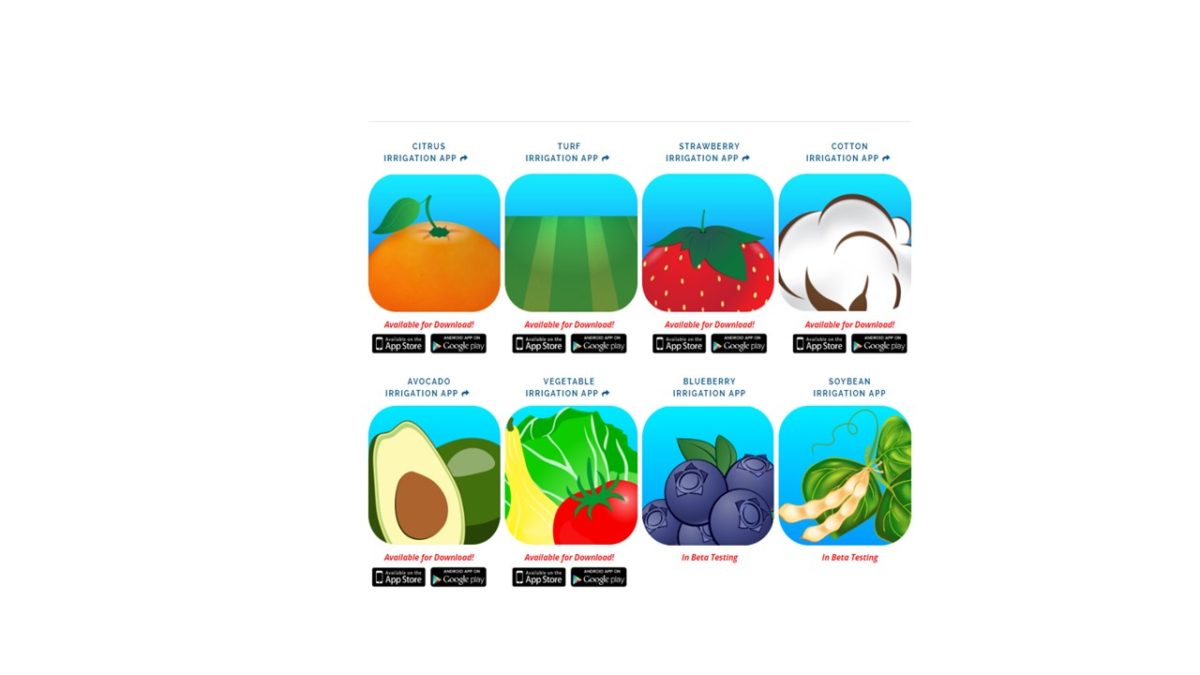By Ibukun T. Ayankojo and Kelly T. Morgan
Fresh tomato production in the United States is dominated by the states of California and Florida. Florida harvests about 28,000 acres of tomatoes with a production value of $382 million. This accounts for approximately 40 percent of the total production value in the United States.
IRRIGATION ACCURACY IS CRITICAL
Vegetable production requires adequate water supply throughout the production cycle for maximum yield and quality. Inadequate soil water causes crop water stress, which results in reduced plant growth and yield as well as poor fruit quality. Maintaining the proper concentration of fertilizer in the soil is also a key factor in crop production.
Excessive irrigation application can reduce crop nutrient supply and increase contaminations. This is especially true on Florida’s sandy soils. Accurate irrigation scheduling is critical for a successful production season and reduced leaching of fertilizer nutrients. Irrigation scheduling methods are established procedures to determine the adequate irrigation amount and timing at a specific crop growth stage.

Figure 1. All SmartIrrigation apps for crop irrigation scheduling can be used in both Florida and Georgia. The apps can be downloaded for free and used on a smartphone with an Android or iOS operating system.
NEW SCHEDULING TOOL
Recently, a group of researchers at the University of Florida Institute of Food and Agricultural Sciences (UF/IFAS) came up with a new and user-friendly technology known as SmartIrrigation (SI) for irrigation scheduling of several crops grown in Florida. SI includes irrigation models designed as smartphone applications using both local weather data and specific crop information to determine crop water requirements.
SI apps for several crops in Florida and Georgia are available for download for free at http://smartirrigationapps.org on both iOS and Android platforms. These apps (Figure 1) have the ability to reduce user calculation error and misplaced irrigation records.
INCREASE INPUT EFFICIENCY AND YIELD
These smartphone irrigation apps are not only effective in reducing crop irrigation water, but also can significantly increase crop yield. An example is the SI vegetable app that is currently being tested by a group of researchers at the UF/IFAS Southwest Florida Research and Education Center (SWFREC) in Immokalee on fresh-market tomatoes.

Figure 2. Tomato yield response to irrigation scheduling methods from two production seasons (spring and fall) in Immokalee, Florida. Note: one box = 25 pounds of tomatoes.
In addition to tomato, the SI vegetable app can also be used to determine daily water requirements for squash, cabbage and watermelon. In tomatoes, the app reduced irrigation water application by up to 20 percent compared to the grower’s standard irrigation scheduling method.
Besides water savings, the app increased tomato yield by up to 30 percent (Figure 2). The app was able to increase tomato yield because it maintained both water and applied fertilizer around tomato roots. The app increased tomato water-use efficiency by 16 percent, while increasing nutrient-use efficiency by 22 percent (Figure 3).
By keeping both nutrients and water around the roots, tomato plants are able to increase nutrient uptake from the soil, which may result in bigger, healthier and more productive plants. Compared to the grower’s standard irrigation scheduling method, the SI app increased nitrogen (an essential nutrient needed by plants in large quantities) uptake by up to 40 percent.

Figure 3. Tomato water-use and nutrient-use efficiencies as affected by two irrigation scheduling methods. Note: Efficiencies are based on the amount of fruit produced by a unit quantity of nutrient and water applied. The data are average values of both spring and fall production seasons.
Increasing the amount of nutrients that a plant can absorb from the soil not only increases plant growth and fruit production, it also has important environmental benefits. The app reduced the possibility of groundwater contamination by preventing fertilizer from being washed away from plant roots into the groundwater body.
Therefore, based on crop performance and water savings, irrigation with the SI app improves irrigation scheduling accuracy compared to the grower’s standard method. Growers can take advantage of this innovative and user-friendly technology for their daily irrigation management of tomato and other crops.
Acknowledgement: This study was possible thanks to financial support from the U.S. Department of Agriculture’s National Institute of Food and Agriculture.
Ibukun T. Ayankojo is a graduate student and Kelly T. Morgan is a professor and center director at the UF/IFAS SWFREC in Immokalee.
This article was featured in the November issue of VSCNews magazine. To receive future issues of VSCNews magazine, click here.
Share this Post










